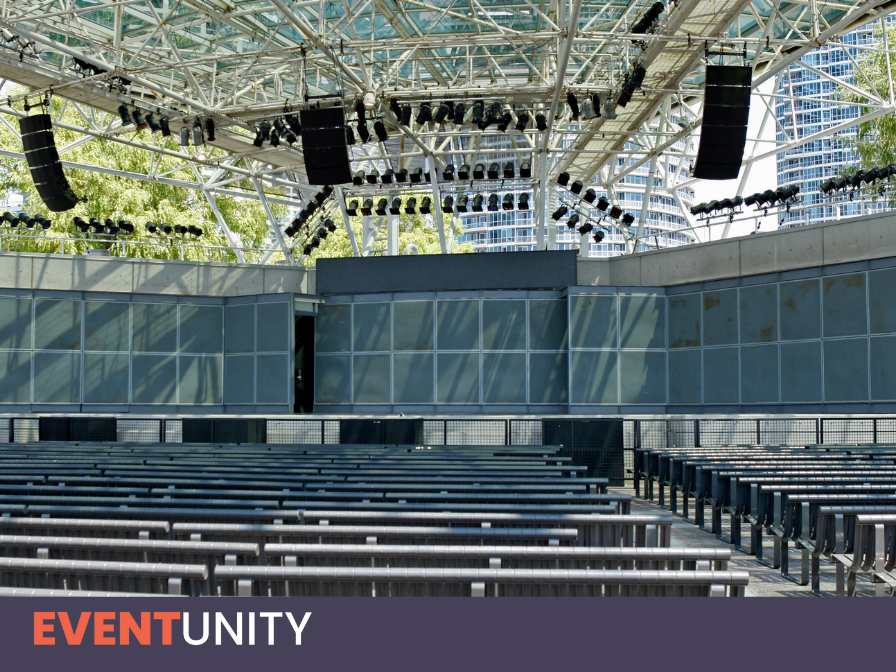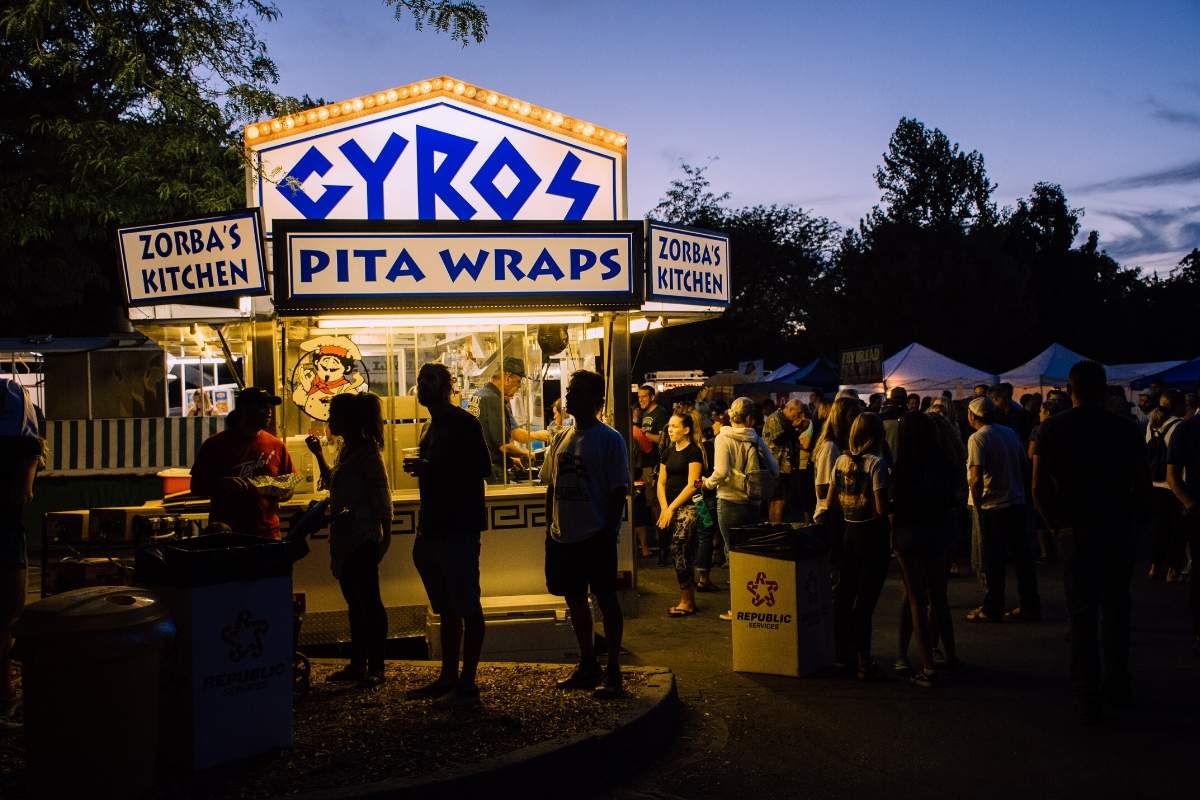Street food festivals are a great way to bring a host of people together with one common shared passion, food and drink. Street food festivals have become even more popular over the recent years with people’s ever-growing love of new, tasty, good food served in alternative urban environments.
To organise a street food festival, first plan all of your logistics (particularly road closures), set your budget, find your traders, plan the marketing and ensure you have all of the relevant paperwork in place.
So, what is the difference between a food festival and a street food festival? Although in principle they are exactly the same, it comes down to location and style of food. Street food suggests being served on a street (but not always) and the style of food tends to be takeaway style and more artisan.
Due to the nature of the event often being outdoors in public space e.g. roads, pedestrian walkways etc., there are a host of differences when it comes to planning, managing, and organising a street food festival to ensure it can go ahead safely.
You will find another article here that I have written on how to organise a food festival. This will be more generic for when you are looking to host a food festival at a more conventional venue.
Although I have touched on marketing, budgets, and general organisational tips this other article will give you a greater depth of information. This blog post will focus more so on the key logistics in getting a street food festival up and running on roads which are typically used daily by vehicles and pedestrians.
Step 1: Planning and logistics for a Street Food Festival
Typically, street food festivals are held in public venues/spaces and in some cases roads. Although they are unique and often have high footfall passing the location, the organisation becomes a little more complex.
When starting to plan, have a think about the following key things to help you:
- Will you need to close roads and or divert traffic to activate your event?
- Traffic management plan
- How will you protect participants from live traffic and other dangers for the whole of your event?
- Will your event interrupt any public transport e.g. buses, trams, trains etc.?
- If so, you will need to contact these services
- Do you need the Police to provide traffic management e.g. stopping traffic?
- If so, do you have funding to cover this?
- Contact emergency services for support on the event day(s)
- Event insurance (Public liability)
- Have you spoken to residents/businesses to gauge their opinion/how they could benefit?
Find your location
I have seen some amazing street food festivals set off quieter streets (that typically have little traffic) or even in pedestrian areas in city centres.
These are great locations in terms of footfall and add a little quirky edge to your location – not your run of the mill place!
There are some things that prevent you from obtaining permission to use roads/public space that needs to be closed these include:
- If it’s a main commuter route
- If it’s already being used as a diversion route due to other events and/or work
- If it would prevent emergency services from gaining access to stations, depots, other key roads or local businesses.
Make contact with the local authorities
Once you have decided on a location, it would be advantageous to start contacting local bodies (council, emergency services etc.) to even see if you can get permission for your event to go ahead.
You will need to give details similar to the information included below in your traffic regulation order. Once you have done this you may get further questions, or just an acknowledgement, to show they have received and agree to your event taking place.
Top tip: You will need to leave plenty of time to contact the council and emergency services with your plans (at least 3 months) as not only does it take time to put plans in place, but details will need to be published in newspapers and transport links will need to plan if they are going to be affected.
To obtain permission you will also need to submit a temporary traffic regulation order to the local councils traffic management team if you plan to close the road for any period of time. This should include the following:
- Organiser name and contact details
- Event details, programme of the event, the expected number of attendees, size of site needed
- Proposed location/venue (helpful to attach a map to prevent any confusion)
- Event date(s)
- Road(s) that will be affected and for how long
- Plan for road closure signing and implementing
- A description of alternative routes
- Insurance details (public liability)
- Risk and method statements that covers the below (plus anything else you feel relevant to your specific event)
- Crowd control
- Application and removal of traffic management controls
- Erection and dismantling of any structures/stands
- Emergency vehicle access
- Disabled access
- First aid
- Fire safety (due to the nature of cooking food)
Top tip: You will need to provide all the necessary signs, cones and barriers in order to close the road to traffic and/or pedestrians. The traffic team will be able to help advise on what you need and there are numerous specialist contractors that will be able to help you with this.
Will I need emergency services on site?
As mentioned above you need to give the emergency services a heads up. They will attend your event if there is an emergency however, if you would like police officers on-site to help manage traffic, this will come at a cost.
If you don’t have a trained and confident first aider, it is worth paying to have an external first-aid organisation like St. John’s Ambulance representative at your event to step in if there are any medical emergencies. You can work out how much first you will need using our first-aid calculator.
Step 2: Budget; so what will I need to pay for?
You will need to allocate money for the following:
- Charge for hire of land/space
- Temporary event notice cost
- Traffic management specialist
- Waste management
- First aid provider (if you don’t have qualified first aiders on site)
- Charge for preparation and advertisement of any temporary traffic closures or changes/suspensions.
- Any additional Police Officers that you want to help with road closures or crowd management
- Insurance
Each council’s costs will differ when it comes to using space e.g. roads. Previous experience has put site space anywhere between £500 and £2,500 depending on scale, number of road closures needed and popularity of location.
This then will obviously go up depending on how many days you plan for your street food festival to take place.
What facilities will I need?
Toilets
Due to the nature of the venue being on a road or public space, this often lends itself to needing toilets installed. The number of these can be relative to the number expected to attend and/or the distance to any public toilets.
Although the number of toilets vs people isn’t a requirement, there is nothing worse than long queues for a toilet at an event so the more you can accommodate the better.
As a rule of thumb, I have added the below table to give you a rough guide when planning:
| Events less than 6 hrs | Events more than 6 hrs | |
| Females | 1 toilet per 120 | 1 toilet per 100 |
| Males | 1 toilet per 600 + 1 urinal | 1 toilet per 500 + 1 urinal |
| Disabilities | 1 disabled toilet | 2 disabled toilets |
Power
You will have one of two options when it comes to supplying power for the site. Your local council will be able to guide you through/work with you on this one. Your first option is to use a power source from the surrounding area and run extension cables to your site.
This is on the basis the council have a power source close to your site and isn’t so far away that you have to have lots of unsightly and potentially dangerous cables. Your second option is to use generators. These then can be positioned within your site in a chosen safe place.
You will need permission from the local council to use them and will need to be safely cornered off as well as monitored regularly throughout the event.
Water
When serving certain food and drinks hand washing facilities or cleaning facilities will need to be made available. Again, you will have two options which the council should be able to advise you on.
You will either be able to hook up to a mains water source (depending on the location of your chosen site) or get water tanks with fresh water in to connect to street food traders.
Sometimes your traders will come equipped with water tanks for their specific needs, so definitely make this a topic of conversation when booking in your street food traders
One thing to note is both water and power will come at a cost. Don’t be afraid to pass on some of that cost to your street food traders (write this into a contract) as they will typically be the ones who are consuming these resources the most.
Security
Being an open event (in public space) it makes it a lot harder to secure off your event site especially when you are loading in and out the various stallholders, toilets, any seating etc.
Not only does this add an extra layer of risk to any passers-by but also is a security risk if anyone were to pass and either damage or steal anything from you and/or your vendors. This is mind, from experience, it’s advisable that you have some simple tape and/or post and rope in order to corner off areas.
Accompanying this it’s good to have some security guards. Not only can they protect the site but also direct people away from danger. Security is something you then may want to keep on, instead of using police etc. to ensure the site is safe. They are also typically cheaper than the police too!
Step 3: Find your traders
Finding traders isn’t actually as hard as you think. Most of the good traders will have a good web presence and on social media, allowing you to easily contact them. If you run repeat events you will usually find that they approach you.
The key is finding the right balance of traders for the event you want to hold. You should give some serious thought to the type of people who will attend your street food festival, what traders can you put in that will offer a wow factor.
Start your search at http://www.streetfood.org.uk/
Remember, people love unique experiences.
Step 4: Plan your Marketing
The marketing tools you use predominantly will need to be tailored to your target audience and how they best consume advertising and find out information. Below I have highlighted a few key ways to help market your event.
Social media is such a valuable and cost-effective resource when marketing an event. The power of Facebook and other social channels can help reach volume both by consumer shares and paid for adverts.
Partnerships are a great way to get marketing out there. For example, partnering with a well-established company will help give you further marketing reach and further event credibility helping to entice more people in.
PR – have an event stand out element. This could be as simple as trying to set a small world record and inviting the local newspapers down to getting a minor celebrity on board to be a special guest.
Budget
Starting your planning with a budget is paramount. Setting out your outgoings, income and projected profit will give you a clear oversight from the start as to what you can and can’t afford. This also will help to highlight where you could most use sponsorships, partnerships, or donations.
When budgeting don’t forget there are a few ways to generate income. These include some of the following:
- Stallholder fee
- Ticket/entry fee
- Partnerships & Sponsors
- % cut of stallholder’s profit
You then have the option to either charge an entry fee or let people come and go for free. Although a paid-for ticket definitely has its place boosting income and helping to predict attendee numbers, from experience, due to the nature of street food festivals often being in open roads/public spaces, it makes it very difficult to fence off/police a ticketed system.
Step 5: Paperwork to consider
Alongside your temporary traffic regulation order, that you will need to submit to gain permissions before even planning the event, you will also legally need the following to ensure your street food festival is as safe as possible.
Pre-event paperwork
Risk assessments and safety are a major consideration especially when you are opening up to the public. Correctly identifying, assessing, and mitigating or reducing any potential risks is key both when setting up the event but also during and after.
Safety and risk assessments can seem a daunting thing. However, there is plenty of guidance and ways to educate yourself on this to equip you. A great starting place or even a refresher is here. *please note this is for UK event safety and not necessarily correct worldwide.
Public Liability (PLI) is an essential cover that you will need. Think of it as an insurance policy for your event if damage or injury were to take place on-site. Your stallholders will have cover of their own (it’s good practice to ask for a copy of this).
In regards to cover for the event as a whole, this will either need to come from you (the event organiser) or the venue where the event is taking place, depending on who owns it.
Food Safety is an essential check. All stallholders by law have to hold health and safety, food hygiene and licensing documentation from the Food Standards Agency. It is good practice to obtain a copy of this when confirming their place at your event. Every food business in the UK should have a star rating from 0 to 5.

There are also a series of food safety rules and regulations that your stallholders need to abide by. They should know these already as they are regularly selling food, however, it’s good to know these to ensure that they are following these rules.

A good place to find these is on the Food Standards Agency website.
Post-event steps
Finally, always do some form of evaluation. Seek 360 feedback from your attendees, your traders, and suppliers. In some cases, it can feel like ripping off the plaster when you gain any bad or constructive criticism after working for months on your event, but it will continue to help you progress and grow as an event and professional.
Feed this feedback into future events!
Summary
To sum up, although planning a street food festival has many similarities to a general food festival, there are some key differences when it comes to securing a location/venue due to the nature of street food typically being held on active roads/pedestrian areas.
Leaving plenty of time to plan will really work in your favour, especially as there are quite a few more stakeholders that will need to be part of the event in order to get it off the ground. Councils, emergency services and traffic management will all be a pivotal part in your event and will need to be included in the planning of your street food festival from the off.
Another significant document you will need to include is your temporary traffic regulation order to ensure you can get access to roads and/or pedestrian areas for your event. Remember, when filling out that document, the more information you can add the more chance you have of getting the site you desire.
A lot of the other planning involved in organising a street food festival is very similar to any other events when it comes to marketing, staffing, budgets etc. so is very transferable.
References and Useful resources (UK only):
The Purple Guide (Health and Safety) https://www.thepurpleguide.co.uk/
Food Standards Agency https://www.food.gov.uk/food-safety
The Nationwide Caterers Association http://www.streetfood.org.uk/


































